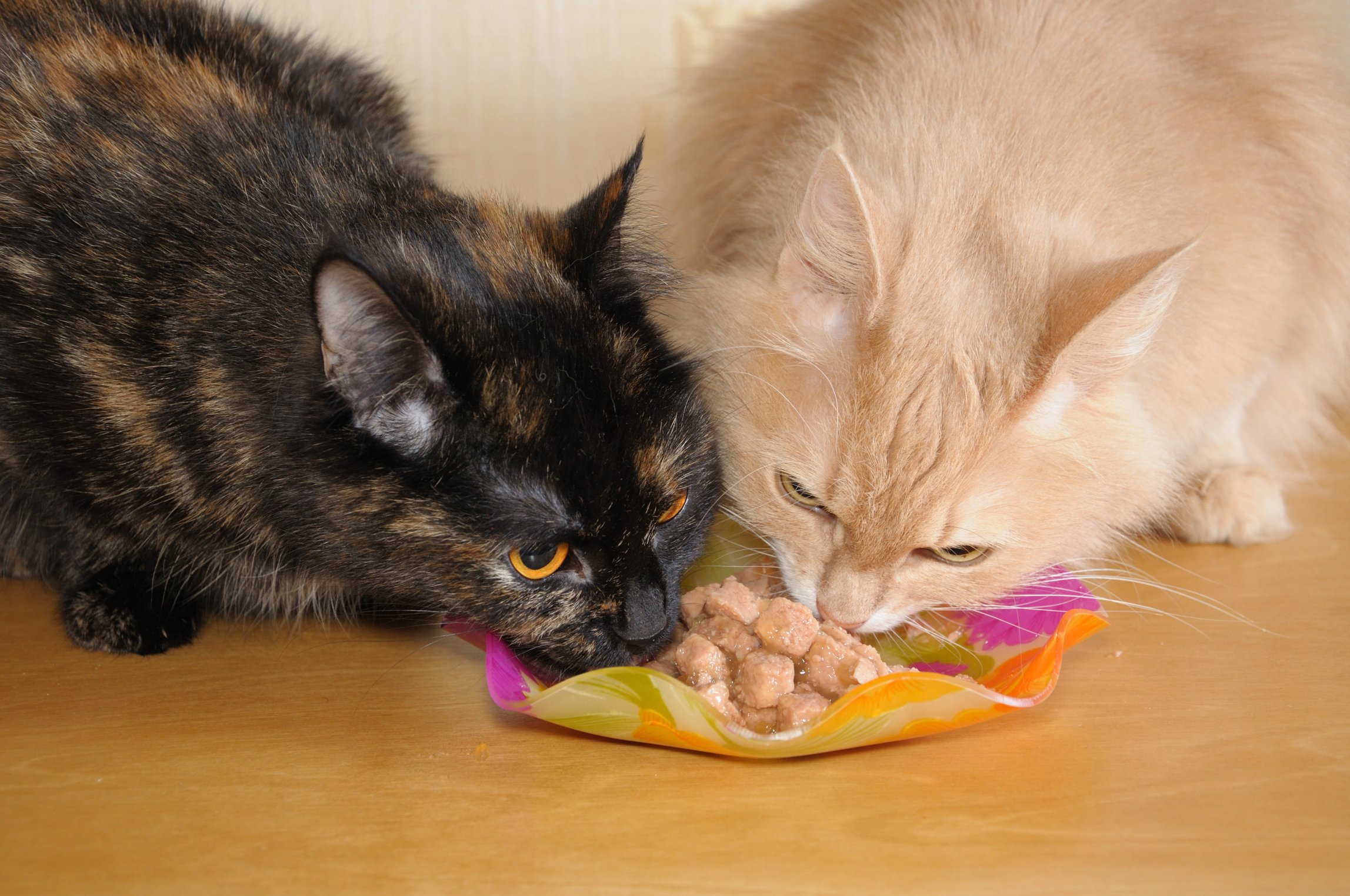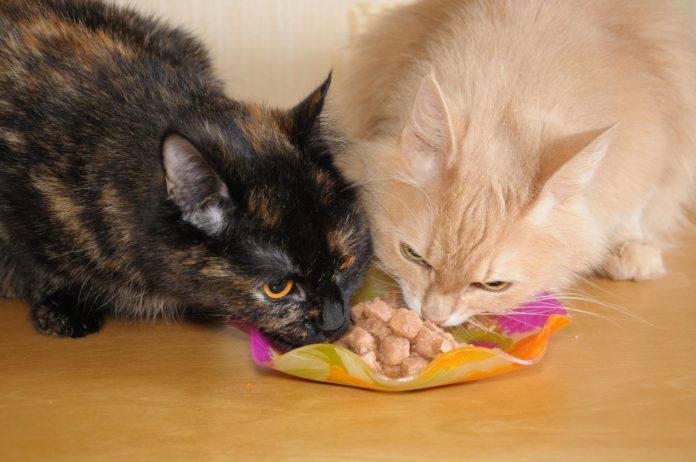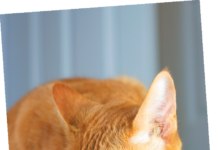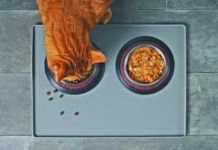In a multi-cat household, it can be difficult to feed different foods to different cats. Feeding the proper food to the right cat is especially important when one or more have medical problems.
Age also plays a role. Kittens require energy-rich food to develop healthy bones and muscle. Overweight cats need nutrient-dense formulas with fewer calories. Underweight cats need more calories and protein. And seniors — well, that depends on the cat.
Special diet = separation
When a cat requires a special diet, you should feed him in another room while your other pets chow down together, explains Nicholas Dodman, BVMS, Director of the Animal Behavior Clinic at Cummings School of Veterinary Medicine at Tufts University. Also, stick to a regular feeding schedule. “If one pet doesn’t finish, pick up the bowl and don’t worry,” says Dr. Dodman. “He’ll eat at the next meal time, when he’s hungry.”
thinkstock


One cat eating another’s food can cause nutritional problems, not to mention stress in the multi-pet home. For example, a cat with food allergies could break out with clinical signs if he consumes the other cat’s food, or a cat with renal disease could get too much protein and phosphorus if allowed to eat the regular food.
When you’re living with overweight and underweight cats in the same house, it can be very difficult to juggle different foods. The underweight cat may dislike his therapeutic food. He may be disinterested in food or simply be a slow eater — while the overweight cat may eat fast, trying to consume everything in sight.
Innovative ideas
If feeding the cats in separate rooms isn’t possible, try feeding in different areas of one room or closely supervising them at mealtimes. One enterprising owner came up with a clever idea: She cut a hole in a box that only her thin cat could fit into. Then she put the kibble inside the box, and the fatter cat could only get part of his head through the hole. You can also try feeding a young or thin cat on a table or high ground as a way to discourage an overweight, less agile cat from stealing the food. Initial supervision is still a good idea, however, because cats can be extremely good at figuring out how to access food.
Commercial products may help, including pet doors to keep cats apart or timed feeders and kibble-filled toys to space out feedings and provide exercise for overweight cats. To prevent both overeating and conflicts over food, Dr. Dodman advises, “You can’t leave the food out all day. Put down just the right amount of food at established meal times and pick up the food after an allotted period. This typically works out no matter how many cats are in a household. It’s not hard work — it’s more a matter of organization and logistics, to schedule several, smaller feeding times.”
Smaller meals are better
According to experts, cats tend to stay trimmer if they’re fed small amounts throughout the day. “In nature, cats eat 10 to 12 times a day — a little bit every so often conforms to the natural eating pattern, to keep them more satiated,” explains Dr. Dodman. “The worst eating pattern for putting on excess weight is to eat once a day.”
He suggests that cats receive at least two meals daily, in the morning and evening, when everyone else eats. “The problem is that most people are feeding too much at a time,” he says, “or they’re feeding treats, or the pet steals food.”
Owners should stick to appropriate food portions and give treats privately — and only to cats who are not overweight. Portion control is key, but simply reducing daily rations won’t guarantee weight loss because commercial foods vary enormously in calorie content. Even low-calorie foods, if fed in excess, will cause weight gain.
Many are overweight or obese
A study by the Association for Pet Obesity Prevention reports that over half of the cats in this country are overweight or obese. Cats are obese if they’re 25 percent or more overweight, but veterinary nutritionists say it is not uncommon to see cats that are 40 to 50 percent over their ideal body weight. Overweight or obese cats face greater risk of health problems, including diabetes mellitus and lower urinary tract disease as well as a reduced life span and overall quality of life.
So how do you get your fat cat to slim down? Do you cut the amount of regular food or change his diet? Measuring a daily ration is important, but simply feeding an obese cat less food is dangerous to his health. Cats have unique nutritional needs for essential amino acids, proteins, fatty acids, vitamins and minerals that must be met even when dieting. You should discuss your cat’s nutritional needs with your veterinarian before making a change.
You should be able to feel the ribs of a healthy weight pet, although ideal weight varies by breed and body type. When evaluating the pet from above, look for a narrowing from the rib cage to the tail. If you have questions about your cat’s ideal weight, or if your cat suddenly starts to gain or lose weight, you should consult with your veterinarian. Cats with health problems — especially older animals — may need specially formulated therapeutic diets to treat medical conditions such as diabetes, kidney or heart disease. — Catnip staff




